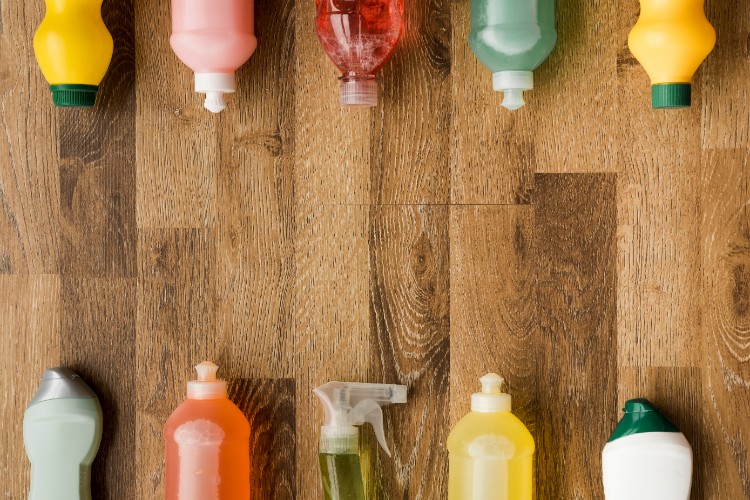What is the difference between bleach and hypochlorite?

Introduction: Why Compare These Two?
Every home has bleach. Every factory knows hypochlorite. Yet many people still ask what is the difference between bleach and hypochlorite?
We face this question often because both play vital roles in cleaning and disinfection. Bleach feels familiar. Hypochlorite sounds technical. But the truth is simple—they’re two sides of the same coin. Let’s explore the chemistry, the risks, and the surprising facts hiding behind these everyday names.
Bleach: The Household Hero
When we grab a bottle of household bleach, we usually hold a solution of sodium hypochlorite in water.
· Liquid bleach for homes contains around 5–6% sodium hypochlorite.
· Stronger industrial bleach solution may rise to 10–12%.
· The rest is water plus stabilizers.
That’s why bleach works so well for laundry, bathrooms, and kitchens. It’s easy to pour and safe for small-scale use.
Hypochlorite: The Raw Ingredient
Now let’s talk hypochlorite. At its core, it means the ion OCl⁻. Chemists call it an oxidizer. We call it a germ destroyer.
· Sodium hypochlorite solutions exist in liquid form.
· Calcium hypochlorite powders treat pools.
· Both release hypochlorous acid when mixed with water.
That acid makes hypochlorite an effective disinfectant. It tears through cell membranes and viruses with ruthless speed.
Sodium Hypochlorite vs Bleach
Here’s where things get interesting. People ask: sodium hypochlorite vs bleach—what’s the real difference?
1. Strength
· Household bleach comes diluted.
· Pure sodium hypochlorite appears in higher concentrations and requires more caution.
2. Everyday vs Industrial
· Bleach solution suits kitchens, laundries, and floors.
· Sodium hypochlorite powers hospitals, municipal water treatment, and food plants.
3. Risks
· A splash of bleach ruins a shirt.
· Mishandling concentrated hypochlorite can produce toxic chlorine gas.
4. Terminology
· Bleach is the friendly nickname.
· Sodium hypochlorite sounds like chemistry class.
Cleaning and Disinfection in Action
When we pour bleach on a surface, here’s what really happens:
1. Sodium hypochlorite dissolves in water.
2. It forms hypochlorous acid (HOCl).
3. HOCl oxidizes and kills microbes.
That’s why bleach and hypochlorite remain at the heart of cleaning and disinfection worldwide.
Food Processing and Stainless Steel Concerns
Factories love hypochlorite for food safety. Spraying it on conveyor belts keeps bacteria away. But there’s a catch—stainless steel doesn’t always like it.
· Low concentrations usually cause no damage.
· Stronger solutions may corrode metal over time.
· Careful rinsing protects both machines and food.
So yes, hypochlorite saves us from contaminated food, but it demands respect.
Personal Protection Equipment: Non-Negotiable
Here’s the twist. Using bleach at home rarely requires gloves. Handling concentrated sodium hypochlorite does. Workers wear:
· Goggles
· Respirators
· Rubber gloves
· Protective suits
Without personal protection equipment, exposure risks rise fast. And no one wants burning eyes or breathing trouble from chlorine gas accidents.
Environmental Impact: A Double-Edged Sword
Now let’s talk nature. Bleach and hypochlorite carry both good and bad sides.
· Good: They prevent disease outbreaks through clean water.
· Bad: Overuse harms rivers, fish, and soil microbes.
The key lies in balance. Controlled dosing makes hypochlorite a friend. Reckless use turns it into a foe.
Sodium Hypochlorite and Bleach in Water Treatment
Cities depend on hypochlorite every day. A well-run Sodium Hypochlorite Generator produces fresh disinfectant on-site. That means:
· No risky bulk transport
· Fresh solutions with stable concentration sodium hypochlorite
· Safer operations with lower emissions
This approach gives millions of people safe drinking water without the fear of microbial outbreaks.
The Hidden Risk of Chlorine Gas
Let’s pause here. Mixing bleach with vinegar or ammonia? Bad idea. That reaction produces toxic chlorine gas.
Symptoms appear fast:
· Coughing
· Burning eyes
· Shortness of breath
It’s a mistake many make when cleaning bathrooms. Lesson learned—never mix cleaners without checking labels.
Hypochlorite Chemistry: The Role of OCl Ions
Behind the scenes, OCl ions drive the action. These ions act like assassins for germs. They rip apart cell proteins and leave surfaces clean.
That’s why both bleach and sodium hypochlorite stay unbeatable in hygiene. The science may sound complex, but the outcome is simple—clean and safe spaces.
Final Thoughts: Two Names, One Purpose
So, what is the difference between bleach and hypochlorite?
Bleach is the diluted, consumer-friendly form. Hypochlorite is the raw, industrial-strength version. Both rely on the same chemistry. Both protect us. Both deserve respect.
We see them not as rivals but as partners. Whether scrubbing a sink with household bleach or running water treatment plants with sodium hypochlorite solutions, we fight the same battle—keeping people safe from harmful microbes.
